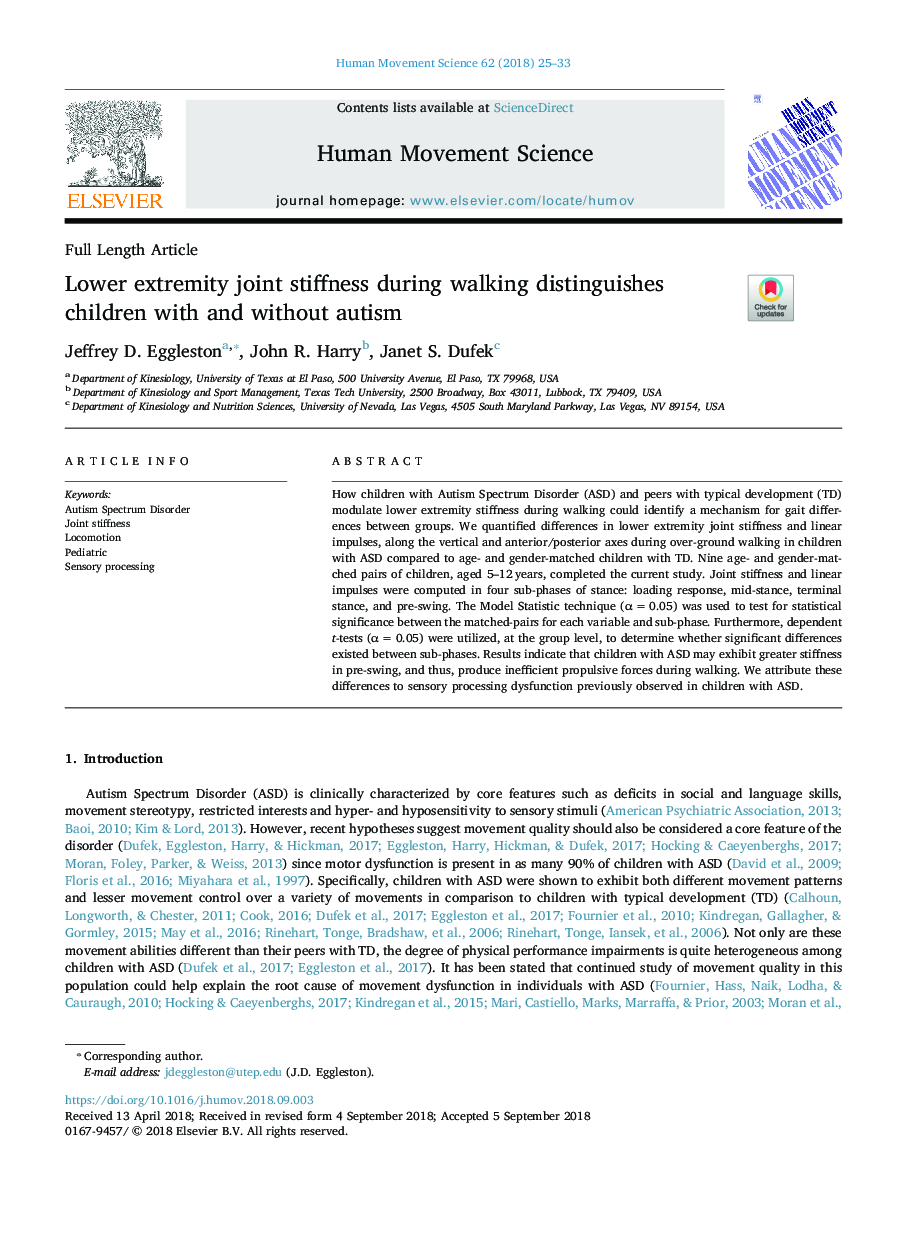| Article ID | Journal | Published Year | Pages | File Type |
|---|---|---|---|---|
| 10140366 | Human Movement Science | 2018 | 9 Pages |
Abstract
How children with Autism Spectrum Disorder (ASD) and peers with typical development (TD) modulate lower extremity stiffness during walking could identify a mechanism for gait differences between groups. We quantified differences in lower extremity joint stiffness and linear impulses, along the vertical and anterior/posterior axes during over-ground walking in children with ASD compared to age- and gender-matched children with TD. Nine age- and gender-matched pairs of children, aged 5-12â¯years, completed the current study. Joint stiffness and linear impulses were computed in four sub-phases of stance: loading response, mid-stance, terminal stance, and pre-swing. The Model Statistic technique (αâ¯=â¯0.05) was used to test for statistical significance between the matched-pairs for each variable and sub-phase. Furthermore, dependent t-tests (αâ¯=â¯0.05) were utilized, at the group level, to determine whether significant differences existed between sub-phases. Results indicate that children with ASD may exhibit greater stiffness in pre-swing, and thus, produce inefficient propulsive forces during walking. We attribute these differences to sensory processing dysfunction previously observed in children with ASD.
Related Topics
Life Sciences
Neuroscience
Cognitive Neuroscience
Authors
Jeffrey D. Eggleston, John R. Harry, Janet S. Dufek,
